Differences Hot Rolled vs Cold Rolled, and Forged Bar
Aug. 19, 2024
Differences Hot Rolled vs Cold Rolled, and Forged Bar
In the world of bar products, there are different ways to manufacture bars and some different things to consider when purchasing bar. Often lead time, quantity, and quality are what drive decisions when purchasing bar. The end-use application can also play a significant role and can range from a product that utilizes the full length of a 20-foot bar to portions of the bar cut and machined to a unique geometry. In this blog, we discuss the options that can provide both high and low quantity options for buyers - Hot Rolled Bar, Cold Rolled Bar, and Forged Bar. (Please note - There is another process which pushes molten bar through a die called hot-drawing or extruding. This method is not ideal for low quantity purchases.)
Click here to get more.
So, Hot Rolled vs Cold Rolled and Forged Bar
Rolling and forging bar boils down to the same fundamental process of reducing the thickness or changing the cross-sectional area of metal by compressive forces. In other words, a large piece of metal known as a billet is pressed down to the size, shape, and length required for a project. This process not only gives the bar shape, but it also adds properties of strength to the bar.
What is Hot Rolled Bar?
This is the process of heating a billet to more than degrees Fahrenheit, above the recrystallizing phase of metal so that it's workable, then rolling it through a planishing mill or rollers to give it its shape. Heating the metal is vital because changing the molecular structure of the metal form dendrites (thread-like sporadic structures) to grains (organized block-like structures), which only happens when metal is in a malleable state. The creation of stronger metal is not only due to the formation of the grains, but the directional grain flow achieved when the bar is rolled.
Pros & Cons Hot Rolled Bar
Hot rolled bar is quick and creates single or multiple pieces easily. Unfortunately, where hot rolled bar falls short is with dimensional tolerances. When the metal cools, it contracts and that leads to the likelihood of warping, areas of varied thickness, and a scaled finish, which means machining is required if dimensional precision or finish type is essential. Lastly, with hot rolled bar, timing is everything. If the rolling cycle is missed lead time is drawn out since additional bar wouldn't be produced until the next mill progression.
What is Cold Rolled Bar?
This process takes everything we just discussed about Hot Rolled Bar and adds a step. When the bar reaches near-room temperature, it is drawn through dies or rerolled in a progressive rolling process. This additional step inherently adds strain hardening to the bar because it is worked after recrystallization. Strain hardening can only harden the metal so much, the bulk of hardening is achieved during the molecular restructuring provided by hot rolling, depending on the grade.
Pros & Cons Cold Rolled Bar
Cold rolled bar has better dimensions, straightness, and increased yield strength. It, again, is used for single or multiple piece requirements. But, with the extra step or rerolling, cold rolled bar is time-consuming and can extend lead times. Unlike a hot rolled bar, however, additional machining for precision isn't required, and the finish is not as scaled.
What is Forged Bar?
This process, like a hot rolled bar, takes a billet and heats it until it is malleable. This is where the processes differ, rather than rolling the bar to get it to size, forging either hammers or presses the bar to the rough dimensions required. The operation gives the bar a 3:1 reduction ratio minimum, which means that the grain sizes are much smaller and tighter in a forged bar, and it consolidates the centers if there are any piping issues. Then, depending on the diameter of the bar, the bar is put through a planishing mill giving it a smooth, rounded surface.
Pros & Cons Forged Bar
Forged bar process takes the best of hot rolled and cold rolled bar and achieves it quickly and efficiently. These bars maintain dimensions and straightness as they cool while having an even higher yield strength because of forgings' unique capability of producing sound-centers during the forging step. The 3:1 minimum reduction helps eliminate any centerline non-consolidation issues that affect bar quality. Unlike the additional step in cold rolling, the extra step of rolling after forging is done while the bar is hot, so there is no time wasted on additional processes after cooling. Forged bar can be used for single or multiple piece requirements and produced on demand. The other significant advantage is for large diameters. The rolled bar is produced to a specific maximum size where the forged bar has a broader span of diameter capabilities.
If you are new to forging or want to compare bar quality, the Scot Forge Bar Team is here to help you navigate your options. Contact our Scot Forge Bar Team for more information about forged bar. Forging may not always be the best option for your project, and if that is the case, we are happy to point you in the direction of vendors we know and trust.
Xingtai Steel are exported all over the world and different industries with quality first. Our belief is to provide our customers with more and better high value-added products. Let's create a better future together.
Additional reading:Why Palisade Fences Are Growing in Popularity?
The Benefits of Using a Palisade Fence for Security and Aesthetics
Custom Chain Link Fence Solutions vs. Standard Options: Which is Best?
Top Custom Chain Link Fence Solutions for 2024
4 Tips to Create a Sustainable Backyard Oasis
Unlocking Metal J Bead OEM Trends in 2024
The Advantages of Incorporating Metal J Bead OEM
What is the Difference Between Hot-Rolled and Cold- ...
Customers often ask us about the differences between hot rolled steel and cold rolled steel. There are some fundamental differences between these two types of metal. The differences between hot rolled steel and cold rolled steel relate to how these metals are processed at the mill, not the product specification or grade. Hot rolled steel involves rolling the steel at high temperatures, whereas cold rolled steel is processed further in cold reduction mills where the material is cooled, followed by annealing and/or tempers rolling.
Hot Rolled Steel
Hot rolling is a mill process that involves rolling the steel at a high temperature (typically at a temperature over ° F), which is above the steel's recrystallization temperature. This process begins with heating large steel slabs, billets, or blooms and then rolling them at high temperatures. The rolling process involves passing the heated steel through a series of rollers to achieve the desired shape and thickness. When steel is above the recrystallization temperature, it can be shaped and formed easily, and the steel can be made in much larger sizes.
Hot rolled steel typically has a rougher, more scaled surface than cold rolled steel. The scaling, formed as the steel cools at room temperature, is often removed later via a process called pickling, which involves the use of acid baths. However, the slightly irregular surface finish and less precise dimensional tolerances of hot rolled steel make it less suitable for applications requiring a smooth, refined surface or tight dimensional tolerances.
Hot rolled steel is typically cheaper than cold rolled steel because it is often manufactured without any delays in the process, and therefore the reheating of the steel is not required (as it is with cold rolled). When the steel cools off, it shrinks slightly, thus giving less control over the size and shape of the finished product when compared to cold rolled.
Uses: Hot rolled products like hot rolled steel bars are used in the welding and construction trades to make railroad tracks and I-beams, for example. Hot rolled steel is used in situations where precise shapes and tolerances are not required.
Cold Rolled Steel
Cold rolled steel is essentially hot rolled steel that has had further processing. The steel is processed further in cold reduction mills, where the material is cooled (at room temperature), followed by annealing and/or tempers rolling. This process will produce steel with closer dimensional tolerances and a wider range of surface finishes. The term 'cold rolled' is mistakenly used on all products when the product name actually refers to the rolling of flat rolled sheet and coil products.
When referring to bar products, the term used is 'cold finishing,' which usually consists of cold drawing and/or turning, grinding, and polishing. This process results in higher yield points and has four main advantages:
- Cold drawing increases the yield and tensile strengths, often eliminating further costly thermal treatments.
- Turning gets rid of surface imperfections.
- Grinding narrows the original size tolerance range.
- Polishing improves surface finish.
All cold products provide a superior surface finish and are superior in tolerance, concentricity, and straightness compared to hot rolled.
Cold finished bars are typically more challenging to work with than hot rolled due to the increased carbon content. However, this cannot be said about cold rolled sheet and hot rolled sheet. With these two products, the cold rolled product has low carbon content, and it is typically annealed, making it softer than hot rolled sheet.
The advantages of cold rolled steel include its superior surface finish, higher strength, and tighter dimensional tolerances compared to hot rolled steel. However, the increased strength and reduced ductility of cold rolled steel can make it more challenging to work with in certain fabrication processes than hot rolled steel.
Uses: Any project where tolerances, surface condition, concentricity, and straightness are the major factors. Due to its improved surface finish and tighter tolerances, cold rolled steel is suitable for applications where aesthetics and precise dimensions are important. It is commonly used in applications requiring high precision and a high-quality finish, such as in manufacturing appliances, automotive parts, furniture, and metal containers. It is also frequently employed in the construction of consumer electronics and in metalworking projects where a smooth, polished appearance is desired.
Choosing Between Hot Rolled vs. Cold Rolled Steel
Understanding HR and CR sheet differences helps ensure that you choose the most appropriate material for your project's requirements. Here are some key points to consider when deciding between hot rolled and cold rolled steel:
Application Requirements ' If the project requires high precision, tight tolerances, or a smooth surface finish, cold rolled steel is typically the better choice. Hot rolled steel is often sufficient for projects where its structural integrity is more important than its appearance. Its ease of fabrication also makes it suitable for welding and bending processes.
Cost Considerations ' Hot rolled steel is generally less expensive than cold rolled steel because of its simpler production process and lower finishing requirements. If cost is a primary concern and the application permits, opting for hot rolled steel can be more economical. Cold rolled steel, while more expensive, offers higher strength and a better surface finish and may be worth the investment for some projects.
Desired Material Properties ' Cold rolled steel typically offers higher strength and hardness due to the cold working process. Hot rolled steel has better ductility, which is beneficial in applications that involve forming or shaping the steel.
Aesthetic Preferences ' If the appearance of the steel is important, cold rolled steel's smooth, polished surface may be preferable. It's ideal for projects where the steel will be visible and aesthetics are a consideration. In applications where the steel will be coated, painted, or hidden, the rougher surface of hot rolled steel may not be an issue.
Lead Time ' Availability of the specific type and grade of steel required for your project can also influence the decision. Some steel grades are more readily available in either hot rolled or cold rolled form.
Don't have time to read The Difference Between Hot-Rolled and Cold-Rolled Steel blog?
You can check out our video below to find out the difference between hot rolled steel and cold rolled steel:
If you are looking for more details, kindly visit hot rolled round bar.
The Advantages of Utilizing Coated Welded Wire Mesh
4 Tips to Select the Perfect Coated Welded Wire Mesh
How Woven Galvanized Wire Mesh Transforms Sustainability?
How Woven Galvanized Wire Mesh Transforms Sustainability?
4 Tips to Select the Perfect Stucco Wire Mesh Custom
How to Customize Your Stucco Wire Mesh?
What blade is best for cutting fiberglass grating?
52
0
0
Related Articles


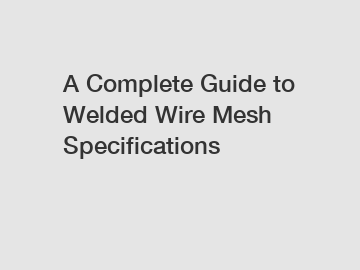
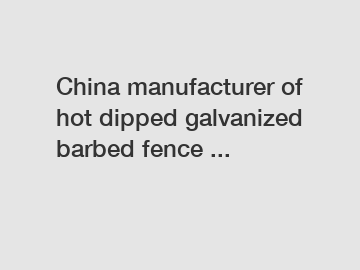
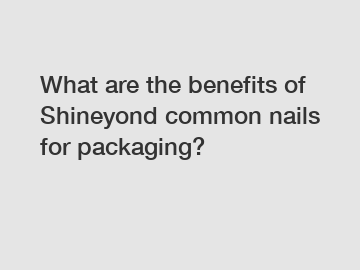
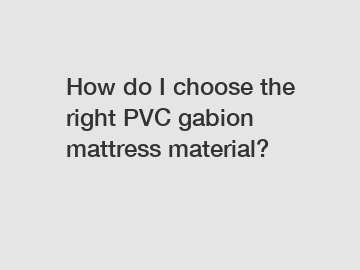

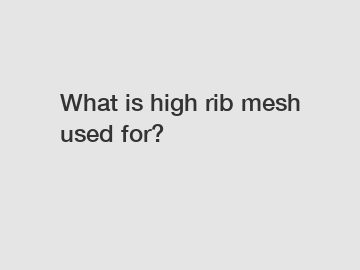
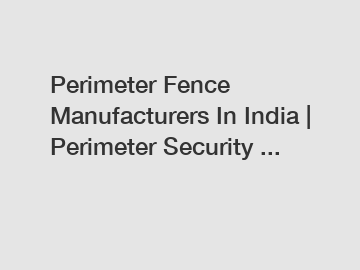
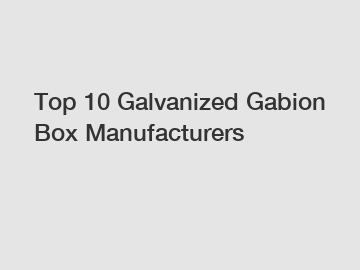
Comments
All Comments (0)